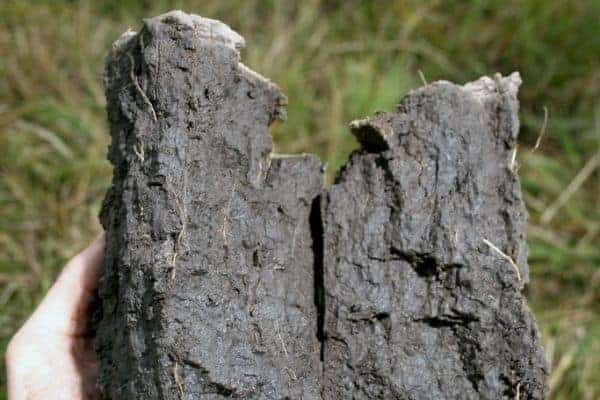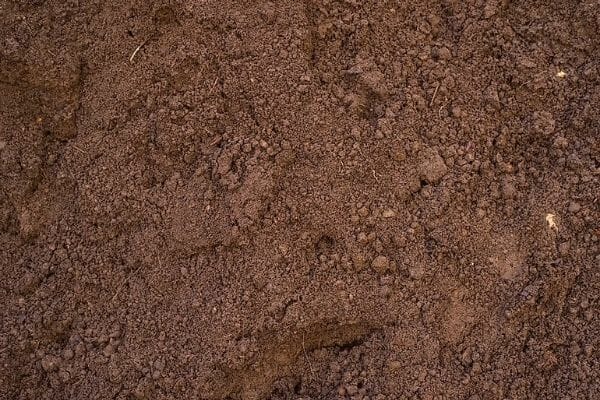Tony O’Neill, expert gardener and best-selling author of the famous “Simplify Vegetable Gardening,” “Composting Masterclass,” and “Your First Vegetable Garden,” combines lifelong passion and expert knowledge to simplify gardening. His mission? Helping you cultivate a thriving garden. More on Tony O’Neill
Soil plays a key role in the world’s food production as it’s relied upon almost entirely. It also sustains a quarter of all terrestrial species present on earth. Additionally, soil is pivotal in storing carbon and water, thus contributing significantly in the fight against climate change and flood prevention. Unquestionably, soil is one of the most essential natural resources available to us as humans. Besides, the composition of the soil has a profound impact on plant development.
The soil structure affects its ability to retain and transmit air, water, and organic and inorganic substances that support root growth and development. It also plays an important role in improving soil productiveness, enhancing permeability, and preventing erosion.
A healthy garden needs healthy soil. So, ensuring that your garden’s soil has a good structure supporting plant growth is essential. Quite a few things will help you understand, improve, and maintain the design of your garden soil.
What is Soil Structure?

Soil structure is how soil particles (sand, silt, and clay) are arranged. Soil that has a good system would empty spaces between these particles. This allows air, water, roots, and other organisms to move around easily.
Soil structure can influence its capability to sustain life and perform important functions like carbon, water, and nutrient cycling. Maintaining a good soil structure will allow air and water into the soil, which is essential for the healthy growth of plants. A healthy soil structure promotes germination, emergence, crop yields, and grain quality.
The soil will suffer from waterlogging, anaerobic, and nutrient lock-up without a proper structure. This can eventually lead to stunted growth and even death of the plant.
A decline in the soil structure is usually associated with land use and crop management practices. However, changes in climate and biological activity can also impact the soil structure.
How Does Soil Structure Support Plant Growth?
Soil offers the following to plants to ensure their proper growth:
Anchorage
Soil offers a home to the root systems of the plants that extend outward and downward, thus, stabilizing plants.
Oxygen
The spaces between the soil particles contain air from which the plants acquire oxygen. Since living cells use oxygen to break down sugars and release energy, these spaces are essential for proper growth.
Water
Other than air, the spaces between the soil particles also contain water that moves upward through the plants. Water helps the plant in cooling down while also carrying essential nutrients. Water also helps maintain the size of cells and ensures that the plants don’t wilt. And most importantly, water serves as a raw material for photosynthesis.
Temperature Modification
While water can help the plant cool down, the soil is a much better insulator that protects the roots from drastic fluctuations in temperature. This is important, especially during excessively hot or cold months times of the year.
Nutrients
One of the most important ways soil supports plant growth is by supplying nutrients. Other than this, it can also hold the nutrients added to it as fertilizers.
Types of Soil Structures
Some of the most basic types of aggregate arrangements in soil are:
Platy

In this type of soil structure, the units are flat and plate-like. Usually oriented horizontally, the plates are generally thickest in the middle and become thinner towards the edges. This structure is usually found in the soil’s subsurface, subjected to leaching or compaction by heavy machinery or animals. This structure obstructs the downward movement of water and plant roots through the soil.
Prismatic

A prismatic soil structure is where the individual units are confined by flat to rounded vertical faces. These units are usually recognized by their distinctive sheer length, while the tops are generally flat. In this structure, water movement in the soil is mostly vertical. Thus, the supply of water to the roots, as well as drainage, is generally quite poor.
Columnar

The columnar structure is somewhat similar to prisms. Flat or slightly rounded vertical faces also bound them. However, the tops are usually very distinct and round compared to the colorful structure. Since this structure is extremely dense, plant roots cannot penetrate these layers. One can consider using techniques like deep plowing to help restore some fertility in columnar soil structures.
Blocky

As the name suggests, the units are blocklike or polyhedral in a blocky structure—flat or slightly rounded surfaces bound the units. The soil particles cling together in almost square or angular blocks and relatively sharp edges.
Blocky soil structures can be further divided into angular blocky and subangular blocky structures (based on their sharp or rounded edges). Large blocks indicate difficulty in the penetration and movement of water.
Granular

Units that are almost spherical or polyhedral form a granular soil structure. Rounded or uneven faces bound them. In layman’s terms, they may look like cookie crumbs. This structure is commonly found in nutrient-rich and highly amended garden soil surface soils.
They also have high organic matter content. This structure also has good absorbency and allows easier air and water movement. Thus, it is a great structure to ensure the healthy growth of plants.
Structureless

Some soils lack structure. Soils that are structureless have no definite arrangement of the soil particles. Usually, sand and sandy-loam soils are structureless that have a single-grain arrangement. Other than this, clay soils can also be referred to be structureless. This is when the particles create a massive structure with no small aggregates inside.
Factors Influencing Soil Structure
Certain elements and practices like compaction, excessive moving and handling of soil, screening, and excessive sodium can deteriorate the soil structure. Heavy machinery can compact the soil making it less permeable to water. This can increase the probability of soil erosion and even flooding. High livestock densities can also do the same and damage the soil structure.
Besides, factors like overworking the soil through tillage can also be harmful. This practice can also decrease the organic content and nutrients in the soil.
It is also known that a high proportion of sodium to magnesium and calcium can also cause the clay particles to repel each other when damp. This can reverse the process of soil structure formation. Excessive irrigation or salting roads can lead to high levels of sodium, which can eventually cause the small organic particles to clog up and make the soil almost impervious to water.
Other than these activities, there are also a few factors that can influence the structure of the soil in your garden:
- Organisms (like worms and bugs) present in the soil
- The amount of organic matter the soil contains
- Any freeze/thaw that occurs with the soil
- The amount of tillage performed with the soil
- The presence and size of soil colloids
- Water flow and movement
Checking Your Soil Structure
To improve the structure of your soil, it is vital to examine it first. You can dig a 30- to 40-centimeter-deep hole while ensuring no spade marks along one side. Now, you need to explore the unmarked side of the hole by inserting a knife around a centimeter. The areas where you sense a greater resistance would indicate compacted zones.
Moreover, it would be best to look at the root development and any traces of worm activity. This will also give you an idea of whether the soil is well-structured. Restricted root growth or lack of activity usually indicates an issue with the soil structure that should be addressed.
Ways to Improve Soil Structure
With careful and proper management and certain practice, one can enhance and maintain the structure of the soil. A few interventions can prove to be extremely beneficial for soil structure. Here are some simple and easy ways in which you can improve the design of your soil:
Balancing the amount of organic matter in your soil
While lack of organic matter in the soil is a common issue gardeners face, excessive organic matter can sometimes be an issue. Thus, it is important to maintain a proper balance of organic matter to ensure proper plant growth.
While deficiency of organic matter would result in a lack of nutrients responsible for plant growth, an excessive amount of organic matter in soil may stimulate the growth of wrong plants, such as algae.
To increase the amount of organic matter in your soil, you can add fertilizers like manure to help the soil regain its strength and even provide the plants with nitrogen which is crucial for their healthy growth. One can also grow cover crops to add organic matter to the soil.
On the other hand, if one needs to decrease the organic matter in your soil, one can try tilling and turning the soil. However, one should carefully examine the soil very closely to maintain balance.
Increase Your Soil Organisms
The bacteria and those natural critters are essential for the soil. They are significant in stabilizing the structure and holding the soil together. Other than this, fungi also play a pivotal role in decomposing particles and ensuring healthier soil. One should encourage wildlife in their soil as well, such as earthworms. They serve as ‘ecosystem engineers’ that aerate the soil as they burrow their way underneath it.
Prepare Your Soil for Extreme Weather Conditions
Regarding the weather, there is tiny that one can do. However, one can prepare the soil for the upcoming drought, flood, frost, or scorching sun and ensure it is well-conditioned to face the adversities ahead.
One can try growing cover crops, rotating fields, working with more fertilizer, or improving irrigation or drainage.
FAQs on Is Soil Structure Important for Plant Growth? Complete Guide
What can destroy soil structure?
Tillage disrupts the soil structure and exposes and kills soil creatures such as earthworms. Tillage also depletes the soil’s organic matter.
What is the best soil type?
Loam is a type of soil that is suitable for plant growth. Loam is a mixture of sand, clay, and silt that landscape companies commonly call topsoil or black dirt.
How does soil affect a plant?
The ability of roots to grow and deliver water and nutrients to leaves is affected by soil structure; if it is poor, it also causes them to produce hormonal signals that inhibit the growth of the shoot, even if they can take up enough water and nutrients.
Why is bare soil bad?
Microbes are eliminated, and the soil becomes sterile when pasture areas become bare due to overgrazing or other factors. Bills of microorganisms exist in a handful of good soil, including bacteria, actinomycetes, fungi, protozoa, and nematodes.
Conclusion on Is Soil Structure Important for Plant Growth
Good soil structure is crucial for sustainable agriculture. And with the proper knowledge of your soil structure, you can maintain and enhance your soil’s health, which will significantly impact water movement, regulating soil temperature and nutrient cycling, thus ensuring proper plant growth.
We hope these tips will help you improve the structure of your soil and grow healthy plants in your garden.
If you found value in this article, subscribe to the blog for all future updates. You can do that below.
